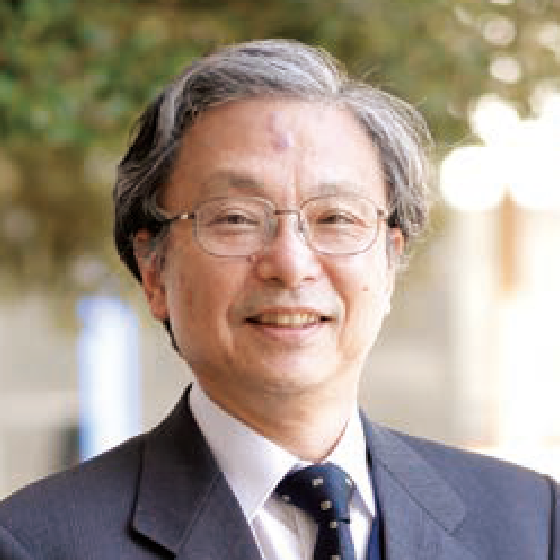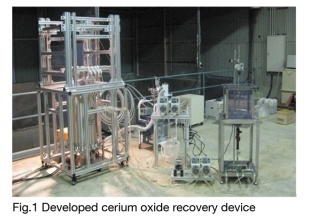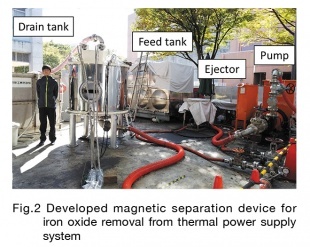- Home
- Faculty Members
- Department of Applied Nuclear Technology
- Shigehiro Nishijima
Faculty of Engineering
Department of Applied Nuclear Technology
- Key words
- Magnetic separation, magneto-Archimedes, resource recovery, volume reduction of contaminated soil , water purification, micro-plastic separation

Doctor of Engineering / Professor
Shigehiro Nishijima
Education
Department of Nuclear Engineering, Faculty of Engineering, Osaka University,
Osaka University Graduate School of Engineering, Department of Nuclear Engineering Master's Program, Doctorial Program
Professional Background
Research Associate, Associate Professor, Professor, Osaka University, Professor at Osaka University, Invited professor of Institute of Scientific and Industrial Research Osaka University, Professor Emeritus of Osaka University, Academic Award from The Society for Remediation of Radioactive Contamination in Environment(2018)
Consultations, Lectures, and Collaborative Research Themes
Lecture and technical consultations for separating specific materials from mixture by means of magnetic fields, environmental preservation using high magnetic field. Technical consultation on development of advanced radiation resistant composite materials
Main research themes and their characteristics
「Research and development of rare earth (cerium oxide) recycling technique by magneto- Archimedes' method」

Recycling of rare earth materials was made possible by using strong magnetic field. This research is a technology that enables recycling not only rare earth materials but also materials such as abrasive grains, which have been difficult to separate and recover. Furthermore, it has been clarified that it is possible to fractionate structural isomers that have a subtle difference in magnetic susceptibility.
When a magnetic field is applied to a paramagnetic suspension from below, the suspension medium is pulled by the magnetic field and the density appears to increase apparently. Therefore, the buoyancy of the suspended matter increases and the suspended matter floats up. The magnitude of the levitation depends on the applied magnetic field and/or its gradient, the magnetic susceptibility of the suspension and the densities. This phenomenon is called the magneto-Archimedes’ phenomenon.
By utilizing this phenomenon, when a plurality of particles is mixed, different floating positions can be obtained by suspending in a paramagnetic liquid and applying a magnetic field. In this way, a plurality of mixtures can be separated and collected at the same time. Also, in the case of a substance that floats, if a magnetic field is applied from above, it will be possible to settle at different positions. Further application of a magnetic field from the lateral direction makes it possible to transport suspended particles (without macroscopic fluid movement). Utilizing this phenomenon, we have developed a device for recovering rare earths. (Fig. 1)
「Study on iron oxide removal from water supply system in thermal power plant using magnetic separation」

A technique for magnetically separating iron oxide scale from water supply system in a thermal power plant was developed. The purpose of this study is to prevent the accumulation of iron oxide scale from lowering the thermal efficiency of the boiler, resulting in a large release of greenhouse gases (carbon dioxide). This technology can be applied not only to thermal power plants but also to nuclear power plants and also to grids that use boilers.
The separation method is a high-gradient magnetic separation method, in which a magnetic filter (mesh made of ferromagnetic thin wires) that produces a high-gradient magnetic field is placed in the magnetic field, and the iron oxide scale is adsorbed by the magnetic force produced by the filter. Is. This method has been used to separate fine particles and particles with low magnetic susceptibility, but high-speed, large-volume processing has not been realized. This research enabled high-speed, large-volume treatment, which enabled its application in the water supply system of power plants (Fig. 2).
This equipment will be installed at the drain of the water supply system of a thermal power plant. Furthermore, it has been clarified that the technique can be applied to the chemical cleaning system for the water supply system. The high-speed, large-volume processing is possible because of the advanced design of the magnetic filter. It was also become clear that the paramagnetic scale can be separated by the advanced design of the magnetic filter.
Major academic publications
S.Nishijima, Removal of iron oxide scale from feed-water in thermal power plant using superconducting magnetic separation, Progress in Superconductivity and Cryogenics, 21 (2019) 22-25.
S.Nishijima, Y.Akiyama and F.Mishima, Research and Development of Concentration and Recovery Method for Phosphor Containing Rare Earth Elements Using Magnetic-force Control Technology, Teion Kogaku (J. Cryo. Super. Soc. Jpn.)
「Biological effects and Physics of Radiation-Considering the Surrounding Living Environment Problems after the Nuclear Accident- 」 S.Nishijima, Osaka University Press (2019 ISBN978-4-87259-683-0 C3)
